The Battle of Oppdal
jueves 13 de diciembre de 2018
Número: 71
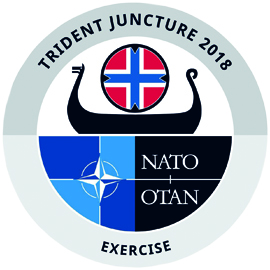
Those in charge of performing the operation were the members of the Tactical Mechanised Group (GTMZ), that Spain provides to the Very High Readiness Joint Task Force, formed on the basis of the II/2nd Infantry Battalion Lepanto of the 10th Brigade ‘Guzman El Bueno’. Their mission was to perform a delay operation to let the enemy— simulated by the American soldiers of the II Marine Expeditionary Force—penetrate in a controlled way, and then launch a counter attack to recover the lost ground in Oppdal and the neighbouring Folldal.
In order to prepare the operation, they counted with the information provided by the Intelligence, Reconnaissance, Targets Acquisition and Surveillance (ISTAR) from the 1st Intelligence Regiment, and in its development, with the cooperation of its counter-battery radars and with the Artillery, that provided safety to the airspace.

The delay operation was followed by an attack—in this case, a battalion from the Norwegian King’s Guard acted as opposition force—in which the Spanish troops had to continue moving towards the North, reaching Berkak. By doing this, the simulated defence of the territory of an allied country that had been invaded finished successfully. This has been the basic assumption of this skills demonstration exercise by the NATO: the fact that an allied country needs help.
This statement is part of the Alliance treaty. Its military capacites are deployed in order to face the threat. To accomplish it in the best way possible, training in joint and combined exercises like this one becomes necessary. As well as helping to maintain the capacities of the ‘spearhead’ that will keep in stand-by phase until the end of the year, it has been the certification exercise for the forces assigned to the 2019 VTJF (time when the VJTF will move to stand-down phase.)
It has been the first time Spain provides this Force with armoured and mechanised means (Leopard battle tanks and Pizarro vehicles.) The personnel of the 10th Brigade has lived the experience with intensity, since it has given them the opportunity of learning with their own means and at a hectic pace during the past two years. That is why, the chief of the Tactical Group, Lieutenant Colonel Villalonga feels as if he had won the lottery, professionally speaking. ‘Having been able to lead a Tactical Group with these characteristics for three years, with so many exercises both in Spain and abroad, has been a great experience’, he claims.
UNITS THAT PARTICIPATE IN THE EXERCISE
10th Brigade (2nd Regiment ‘La Reina’, 10th Regiment ‘Cordoba’ and 10th Battalion ‘Zapadores’)
21st Logistics Support Group
I/74 Anti-aircraft Artillery Group
ISTAR Battalion (Intelligence, Surveillance, Target Acquisition and Reconnaissance)
Latvian Lessons
Equally lucky were the ones commanding the contingent in Latvia, setting where the ‘Cordoba’ Brigade also deployed (between January and July 2008.) The lessons learnt in this mission have been very useful for the exercise in Norway, since both countries, Latvia and Norway, have a cold climate characterised by the snow and low temperatures.
In spite of having endured temperatures of 20ºC below zero, no cases of hypothermia have been reported, and the vehicles have responded adequately. This has been made possible thanks to the specific ‘combatting in cold weather’ instruction in which the GTMZ members have been trained. It included days living and moving in high mountain areas and driving practice at the Mountain and Special Operations Military School, and the courses they attended together with the Norwegians.
Also, in the days prior to the beginning of the ‘Trident Juncture’, another exercise called ‘Brilliant Jump’ was conducted. The aim was to carry out internal training activities in cooperation with personnel and means from other countries.
.

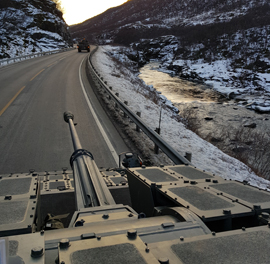
International Coexistence
Living together with armed forces from other countries and cultural exchange are other incentives of these multinational exercises.
Spanish soldiers integrated into an Italian armoured unit, ‘Ariete’ Brigade, so they have developed closed ties with the Italian soldiers. Durung the exercise, a Slovenian company integrated into the GTMZ. They also worked together with the Norwegian National Guard. According to the Lieutenant Colonel, the cooperation with them has been ‘impressive’, despite the cultural and idiomatic differences.
Cultural Differences
If there is something that is evident in these NATO exercises is the partners’ ability to work together efficiently, despite coming from different countries.
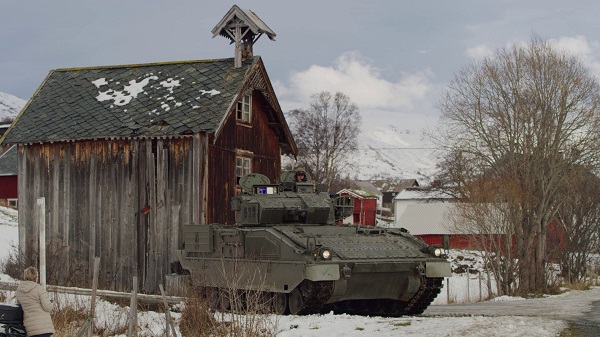
However, differences are there, and they stand out. For instance, the Spaniards, who spend the first deployment days at a camp site in the town of Dallholen, in the centre of Norway, were surprised by the scarcity of light during the day.
They also found striking the fact that their movements were limited, because environmental restrictions are common in Norway, and they are much more sensitive to any alteration to the animals’ peace or their own. A peace that is now guaranteed by the NATO.
Artillery
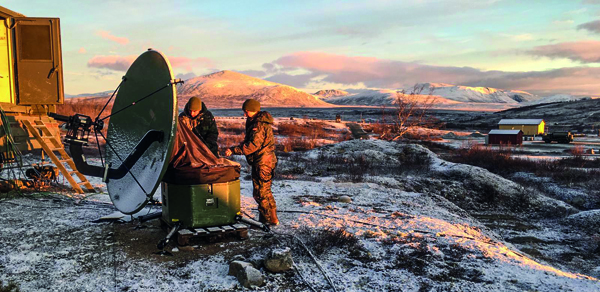
During the exercise, the Spanish Anti-aircraft Defence Unit (UDAA) has protected the airspace with its Hawk system, as part of the NATO Air Defence System, covering the Multinational Brigade.
Based in Hjerkinn, a small 50-inhabitant village in one of the most arid areas in Norway, have defended the civilians and their own forces from the enemy aircraft, according the roles distribution in the exercise, thanks to an efficient early warning system.
The ‘Halcon’ UDAA was formed by personnel and means from the I/74 Anti-aircraft Artillery Group and the Transmissions Unit of the Anti-aircraft Artilley Command, who have come back home with the satisfaction of having achieved an important milestone. They have been the first in integrating into the Air Defence System of the Alliance in a record time. They did it in hardly 24 hours, so they set the example and provided technical support to other countries’ Artilleries when liaising.
It was all monitored from the Deployable Air Control Centre, located at the Aerland Main Air Station (Norway.)
Thus, the ‘Halcon’ UDAA is rewarded for the hard training they have received since March in order to prepare this exercise. They have accomplished the aim of their participationin the ‘Trident Juncture’.
At the same time, they have certified their preparation to be part of the forces package assigned to the NATO Very High Readiness Task Force that will be available in 2019.
Logístics
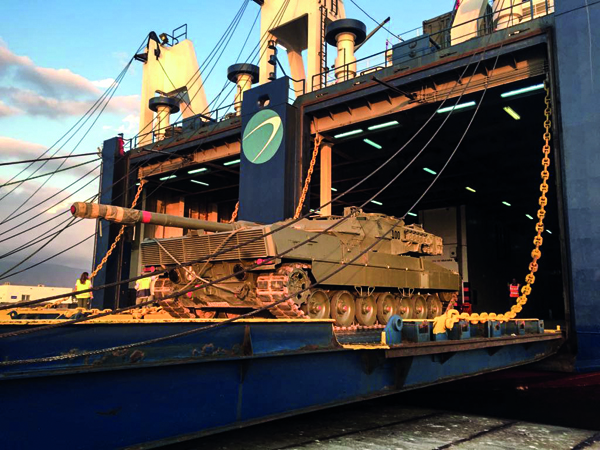
Moving all the materials to Norway has been the most complicated part of the important logistics operation the participation in ‘Trident Juncture’ has required, For the deployment and retreat, a Support Unit was settled in Granada, with personnel and means from the Support Group for the Projection of the 1st Transport Group and the III/61 Logistics Group with two detachments: one at the ‘Cervantes’ base in Granada and another at the Motril port. The materials were shipped here to be sent to the Åndalsnes port in Norway.
A Multinational Fuel Unit led by France was present at the exercise. It counted with Spanish participation from the 61st Logistics Support Group (AALOG), which provided four tanks. The National Support Element in charge of the real logistics of the Spanish Troops was generated by the 21st AALOG.
Furthermore, the Projection General Headquarters was activated at the Operational Logistics Force General Headquarters. It had been launched for similar exercises in order to direct and coordinate all movements (with the support of the Civil Guard.)
UNIDADES DEL EJÉRCITO
- Araba Álava |
- Albacete |
- Alicante |
- Almería |
- Asturias |
- Ávila |
- Badajoz |
- Barcelona |
- Burgos |
- Cáceres |
- Cádiz |
- Cantabria |
- Castellón |
- Ceuta |
- Ciudad Real |
- Córdoba |
- A Coruña |
- Cuenca |
- Girona |
- Granada |
- Guadalajara |
- Gipuzkoa |
- Huelva |
- Huesca |
- Islas Baleares |
- Jaén |
- León |
- Lleida |
- Lugo |
- Madrid |
- Málaga |
- Melilla |
- Murcia |
- Navarra |
- Ourense |
- Palencia |
- Las Palmas |
- Pontevedra |
- La Rioja |
- Salamanca |
- Segovia |
- Sevilla |
- Soria |
- Tarragona |
- Santa Cruz de Tenerife |
- Teruel |
- Toledo |
- Valencia |
- Valladolid |
- Bizkaia |
- Zamora |
- Zaragoza



